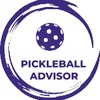Pickleball, the dynamic sport that has taken the world by storm, brings not only physical agility to the forefront but also a unique strategic element known as "the kitchen." Commonly referred to as the non-volley zone, the kitchen plays a pivotal role in shaping the flow and outcomes of pickleball matches. In this article, we'll explore the ins and outs of the pickleball kitchen, understanding its rules, leveraging its strategic advantages, and mastering the art of controlled gameplay.
1. The Heart of the Court: Understanding the Kitchen
The kitchen, a 7-foot area adjacent to the net on both sides of the pickleball court, serves as a no-volley zone. Players are restricted from volleying the ball (hitting it out of the air) while standing in this zone unless the ball bounces first. The kitchen's strategic importance lies in its ability to create a buffer between aggressive net play and more controlled shots from the baseline.
2. Strategic Positioning: Navigating the Kitchen with Finesse
Effective use of the kitchen involves strategic positioning. Players must balance being close enough to the net for quick reactions and volleys while ensuring both feet are outside the kitchen during the shot. Skilled players strategically move in and out of the kitchen, capitalizing on opportunities to engage in controlled exchanges with opponents.
3. Dinking Mastery: The Kitchen's Soft Touch
The dink, a soft and controlled shot that skims over the net, is a vital skill within the kitchen. Mastering the dink allows players to engage in precise and deliberate rallies, keeping opponents on their toes and setting up strategic plays. The kitchen becomes a dance floor, where dinking becomes an art form, and finesse reigns supreme.
4. Volleying Etiquette: Navigating the No-Volley Zone
Understanding when to volley and respecting the kitchen rules are essential aspects of successful pickleball play. While the instinct may be to engage in aggressive net play, players must exercise restraint when positioned in the kitchen, showcasing disciplined shot selection to maintain control.
5. The Lob Shot: A Strategic Escape from the Kitchen
While the kitchen restricts volleying, the lob shot becomes a valuable tool for players looking to break away from the net and create tactical advantages. A well-executed lob allows players to regain court positioning and control, introducing an element of surprise to the game.
6. Balancing Act: Staying Clear of Kitchen Violations
Navigating the kitchen requires a delicate balance. Players must be vigilant about their foot placement, ensuring both feet are outside the kitchen lines during volleys. A violation results in the loss of the point, emphasizing the importance of staying aware and maintaining proper positioning.
7. Kitchen Drills: Sharpening Skills for Controlled Play
To enhance kitchen proficiency, players can engage in targeted drills that focus on dinking, volleying from strategic positions, and incorporating the lob shot effectively. These drills contribute to muscle memory, improving overall court awareness and decision-making during fast-paced matches.
In conclusion, the pickleball kitchen is not just a zone on the court; it's a strategic arena where finesse and control prevail. Mastering the art of the kitchen allows players to dictate the pace of the game, outmaneuver opponents, and showcase a level of precision that defines advanced pickleball play. So, step into the kitchen, embrace the strategic dance, and elevate your pickleball game to new heights.

No comments yet